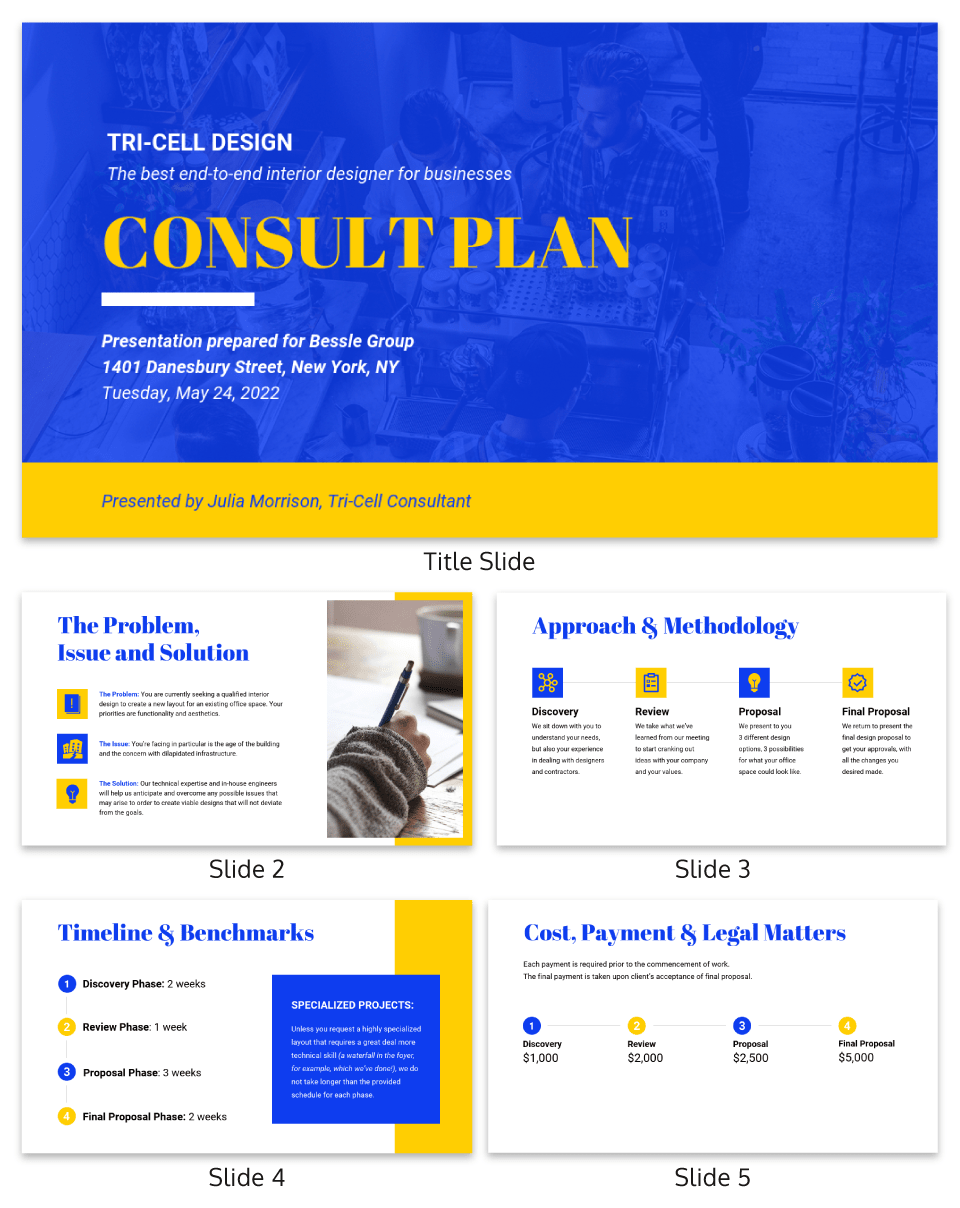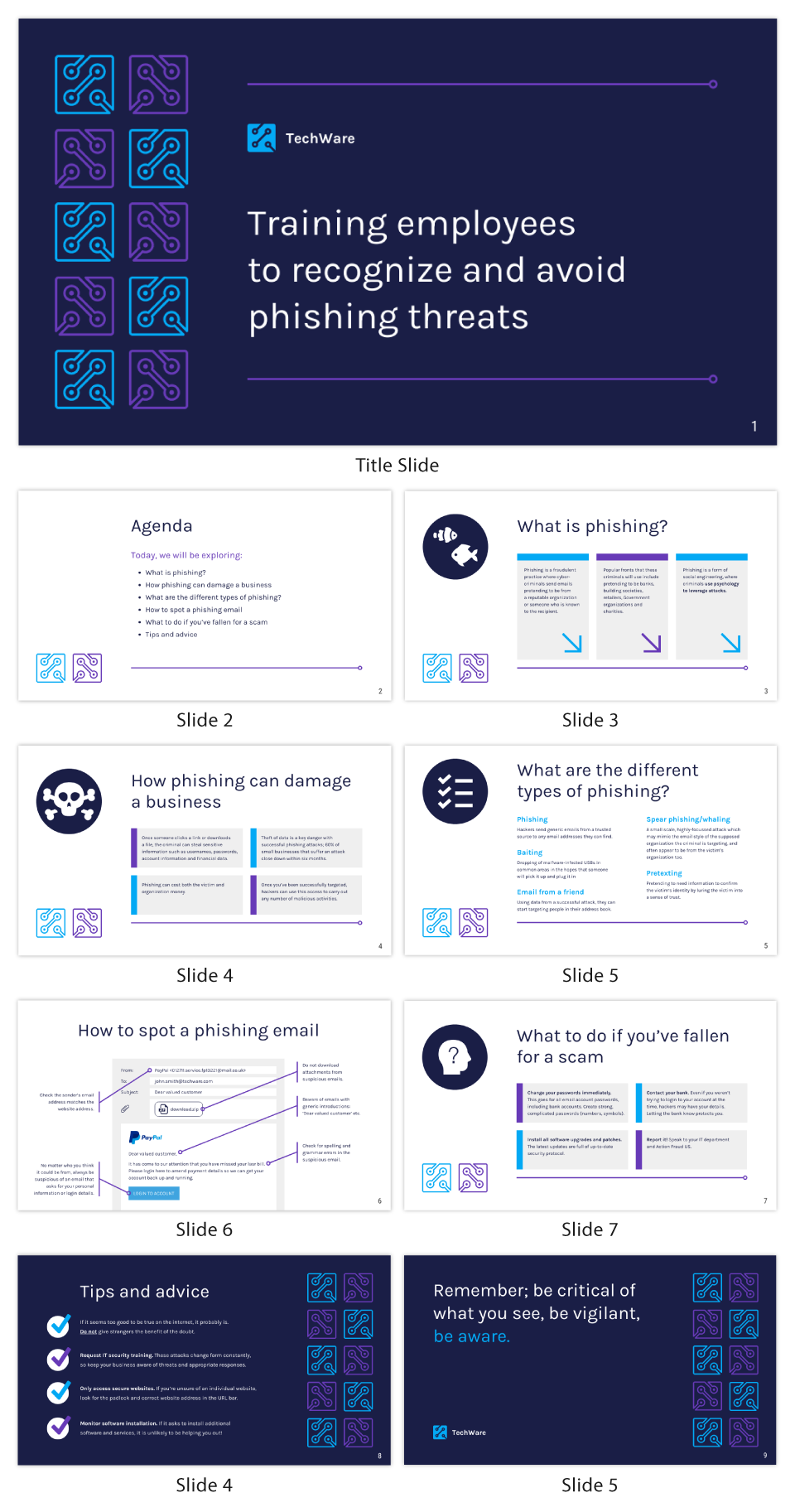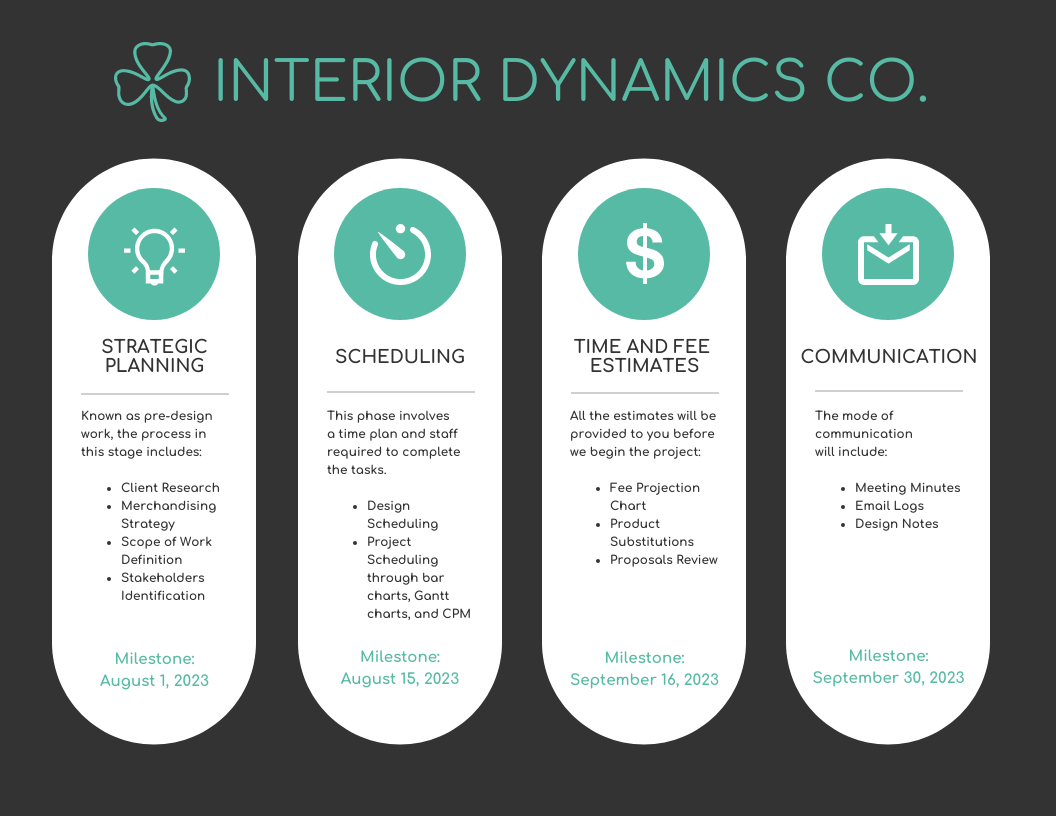
When transformation efforts within organizations fail, there are usually several reasons why, from change fatigue to lack of clear goals. The stakes of failure are high, which means your change management plan needs to be done right the first time. That’s why it’s smart to use visuals like infographics, charts and graphs as you craft your transformation plan.
Venngage is an ideal tool for executive leaders to harness the power of visuals for organizational transformation management.
Let’s explore some basics about successful change management plans and how you can use Venngage to create visuals that help enhance their effectiveness, spark team enthusiasm, improve communication and ensure everyone is working toward the same goal.
Click to jump ahead:
- What is change management?
- How to create a change management plan?
- Change management plan templates
- Why is a change management plan necessary?
- What should a change management plan include?
- What are the benefits of a change management plan?
- Visual tips for change management plans
- Change management plan FAQs
What is change management?
Change management refers to the process that an organization or leader follows to create change. Many of the steps and activities related to change management are universal, which means that they apply to individuals as well as small and large organizations. Best practices for change management apply to changes in process, approach and even culture, and can be supported by a change management software to ensure consistency and successful adoption.
How to create a change management plan?
Here’s the step-by-step process to building a change management plan:
Step 1: Define the scope
First, list what changes you are making to processes or systems and the purpose of the change. Here, you also need to identify the stakeholders who will play a crucial role in the change management process.
Step 2: Predict the impact of change
Forecast the potential impact of the changes. Analyze how the changes will impact different teams, departments, customers, vendors and all other internal and external stakeholders. This helps you prepare in advance for potential resistance.
Step 3: Create a checklist
Now, it’s time to design the plan. Create an elaborate checklist of what changes you want to communicate and how you want to communicate them. You can create an action plan for implementing the changes by creating new tasks and assigning clear deadlines.
Step 4: Implement the changes and monitor their impact
Assess what new skills or tools your team would require to adapt to changes smoothly. You need to also set clear goals and key performance indicators (KPIs) to assess the impact of the change.
Step 5: Focus on continuous improvement
Seek feedback from your team and identify areas to improve your plan. You can then modify the plan for better change management.
Change management plan templates
Now that you understand a bit more background about organizational transformation and what change management plans can involve, let’s take a look at how change management plan templates incorporate visuals like charts, graphs, infographics and more can help keep the train on the tracks.
Change management model templates
Understanding change management will make it easier for employees to adopt strategies. Kurt Lewin’s change management model explains the process of change within an organization.
HR managers can the mind map below to succinctly share the Lewin change management model. This can easily be printed out and stuck on a company billboard.
The below infographic shares more details about Lewin’s three-step model. This type of visual works best when employees have more time to read through the document.

Kübler-Ross change management curve templates
Elisabeth Kübler-Ross is best known for outlining the stages of grief. But the Kübler-Ross curve is also relevant to change and transition.
In companies, accepting change can take time. Venngage has templates to help employees and teams during the transition period.
This Kübler-Ross change curve template acts as a framework to understand employee needs. The pictograms make the data easy to understand at a glance.

Alternatively, HR managers can use the below change curve templates to assess employees.

Here’s another version of the template that uses different colors. You can also adapt the template to your business branding.

McKinsey change management framework template
Another essential change management model is McKinsey’s 7-S framework. This infographic makes it easy for managers to understand the process and share it with their teams.
Change management strategies template
Making a strategy for change in a company makes the process easier for all involved. Visualizing these strategies helps keep everyone aligned.
For example, this infographic outlines the various types of change management. There are also sections on the impact of change management, as well as common challenges and possible solutions.
Here’s another type of infographic that outlines the change management plan of a company. Using colors and icons, this plan would be ideal for a startup.
Effective change management strategy template
A step-by-step infographic is a great way to visualize the change management process. This strategy template shows the six steps involved in strategizing change in a company.
Change management communication plan
Change management communication plans can be detailed, offering important background information about the project. Separate sections and color-coding help keep information organized.
Also read: Effective Communication for Change Management: Infographics for Transformative Leadership
Change management communication plans can also lean to the simple side, like this one, which could easily be updated quarterly, monthly or weekly. Its compact format provides the basic need-to-know information.
Change management worksheets
A worksheet is a great tool for ensuring all aspects of the change management plan are met.
The worksheet below helps project managers outline their goals and how they will achieve the final results of their project.

Here’s another type of worksheet that project managers and HR managers can use. It is more bare-bones than the previous example but it still gets the job done.

Change management project plan
Every change within a company needs a solid foundation. Whether one is implementing new software or beginning a new partnership, it should be planned out.
For example, a change management plan for software implementation, like the below, will make starting a new project easier.
Getting approvals and buy-in from all team members is notoriously difficult when it comes to any transformational initiative, and organizing your change management proposal into a simple presentation makes it easy to share with team members without overwhelming them.
Presentations are ideal in the planning phase of organizational transformation. But during the project, you may need a mind map, so that individual tasks or departmental goals can be split into manageable bites.
Use this example during initial discussions and planning so you can be sure no major aspects fall through the cracks. Putting together a mind map plan like this can help you take a step back and see the big picture.
Change management questionnaire templates
Another excellent tool for keeping everyone aligned with the change management plan is using questionnaires.
The following presentation visualizes the types of questions one would ask during the change management process. There’s also space to add the answer, which can be decided on by consulting relevant team members.
If the questionnaire process isn’t collaborative but is instead instructional, the below infographic will suffice.

Change management proposal
We’ve created several versions of the same change management proposal to provide you with more variety of templates to use on different occasions. You can organize your change management proposal into a presentation like in the example above, or can use a traditional proposal template like this one.

Making your change management plan digestible and approachable is perhaps the biggest benefit of using visuals to support your plans. This example summarizes an enormous amount of information, keeping everything simple, clear and intuitive.
Organizational change management plan
Change management plans are often necessary when making major hiring decisions, such as those on the executive level or in roles that are public-facing. This simple step-by-step process infographic can be helpful in cases where filling certain openings requires more input and buy-in than from the hiring manager alone.
Change management roadmap
One of the best ways to incorporate visuals into your change management plans is to translate them into a journey or roadmap format. The example above would be ideal for managing change in a smaller organization.
Not all organizational transformation initiatives come with hard dates or deadlines, and this example illustrates how it’s possible to use simple visual organization, including color-coding, to create a basic change management roadmap.
Change management plan PPT (PowerPoint)

Consider using Venngage as an effective change management tool to optimize your change management plan for PowerPoint. Such presentations can be on the lean side, like the one above, giving team members only the basic information they need to get their arms around the goals.

Change management PowerPoints can be more in-depth, and while the template above isn’t about organizational transformation specifically, it’s easy to see how it could be customized to help a single department or team understand where they stand in the change initiative.
Change management timeline

Use this example to set out several hard deadlines and milestones in your change initiative. Keep this format for projects that will take at least a year, or customize it to cover a shorter length of time.
For projects with variable milestones, consider a monthly timeline infographic. Use icons to illustrate the tasks that need to be done.

Use this simple four-milestone change management timeline and update it weekly or monthly to add new milestones and switch up the content. Consider keeping icons consistent; for example, if you include a “communication” bucket in subsequent updates, continue using the same icon so team members know immediately what that section will cover.
Why is a change management plan necessary?
Gartner indicates that about 50% of corporate change management processes are obvious failures, while only 34% are clear successes. A report by McKinsey places the blame on a few common causes:
- Lack of buy-in
- Misalignment of capabilities and goals
- Lack of plan or planning infrastructure
- Untracked progress
- Change fatigue
- Need for change unclear or poorly communicated
Aside from not having achieved the primary goal, a failed transformation effort wastes time and money, and it can be devastating to morale, even eroding confidence in leadership. That’s why having a well-crafted, effective and engaging change management plan is so crucial.
What should a change management plan include?
Giving your goals their best chance of becoming a reality means creating an effective change management plan, communicating it to all relevant parties and ensuring objectives are met along the way. It’s one of the many change management strategy documents that you need to create for your change initiative.
There is no one way to go about developing a change management plan. An example is Kotter’s eight-step process:

Regardless of the specific model used to achieve organizational transformation, a successful change management plan should include at least these elements:
- Definition of goals: This must go beyond simply stating the transformational goal to why it’s necessary and will be beneficial for everyone involved. Ensuring there’s a compelling story will help keep team members on board and energized.
- Capability and readiness assessment: Does your current team have the skill set or time to achieve the goals? Who within the organization will take ownership of the process and outcomes?
- Determination of effects: What departments and individuals will be impacted? Organizational transformation is by definition broad, so it’s important to be as specific as possible, determining how the changes will impact all team members.
- Communication strategy: The organization should speak with one voice, but communications about the company’s transformation plans should come from team members’ supervisors rather than being delivered by an executive nobody ever interacts with.
- Training and ongoing support: Will people need to be trained on new systems? If so, when and how will that happen? How will the need for training impact the jobs they do every day that aren’t part of the change initiative?
- Measure results: Any plan must have an objective, and you need to determine how exactly you’ll measure success. In addition to whether you reached your most obvious goal, you should also plan to measure results on a more personal level—did team members feel supported and what was the impact on company culture?
Related: 7 Change Management Models and How To Apply Them
What are the benefits of a change management plan?
Now, let’s how an effective change management plan benefits your organization:
- Increases employee cooperation: It helps clearly communicate the changes in processes and reasons for those changes to your team. It reduces resistance as employees feel more involved.
- Minimizes team disruptions: A change management plan provides a clear path for implementing changes and helps businesses identify and manage potential challenges. This reduces team disruptions and ensures your team productivity isn’t impacted.
- Promotes accountability: Change management plans lay down clear guidelines for leaders to drive changes and navigate the team smoothly. This facilitates leadership and accountability within the organization.
- Facilitates innovation: An efficient change management plan helps teams quickly adapt to market changes and the latest trends, thus promoting innovation.
Visual tips for change management plans
Now that you’ve seen some examples of how visuals can support organizational transformation initiatives, let’s go over some tips before you get started bringing your plans to life.
- Stay on brand: With Venngage’s My Brand Kit, you can ensure all visuals you create for your change management plans use the fonts, colors, logos and other assets related to your brand.
- Keep it simple: There’s a place for highly produced, slick and clever uses of infographics, charts, graphs and other design elements, but your goal here isn’t to blow your audience’s mind with how creative you are. Using visuals in change management plans is most effective when the visuals enhance team members’ understanding of the plan and how they fit into it.
- Make regular updates: Another major reason why organizational changes fail is that people lose steam. If your team finds one infographic about your change management plan helpful, keep making them and update the information as necessary. For many people, seeing a visual representation of the progress they’re making toward the goal will be inspiring.
Change management plan FAQs
Do you have questions about change management plans? We’ve got answers.
1. Is making a diagnosis a critical part of a change management plan?
Just as a physician might consider your personal medical history or conditions that run in your family before crafting a treatment plan, diagnosing what has not worked in the past as well as what’s not working now can help you ensure you’re breaking any negative patterns that might cause your change initiative to go off the rails.
Discussions and honest assessments like this are vital parts of the change management process.
2. How do I make a change management plan?
To make a successful change management plan, you must first have a firm idea of the change that’s needed. Often, organizations can be dazzled by the prospect of something new, but when they get into the planning process, they find organizational transformation isn’t actually necessary to achieve their goals.
But once it’s clear that meeting your goals will indeed require a massive shift, the basic steps of making a change management plan include determining who in the organization will be affected, how long it will take to make the necessary changes, what supports will be in place for team members and how progress will be monitored.
3. When should a change management plan be created?
Especially when it comes to transformational decisions, it really is not possible to over-plan, so we recommend starting on your change management plan long before the wheels of change are set in motion.
Crafting your plan well ahead of time means you’ll have the lead time necessary not only to make the change you seek but to anticipate areas where your plan may not serve you as well as it could. Planning never ends, and your change management plan should be a living document.
4. How do I evaluate a change management plan?
Evaluating a change management plan’s successes and failures is more than just seeing if the end goal was met. Look back at your change management plan when all is said and done, going piece by piece to determine whether each aspect of the plan served your team well.
If it did, be sure to keep some aspect of that approach in place for your next big project. If not, consider how it could be improved or whether that specific procedure can work at all. Remember that success is not a zero-sum game, and all projects will have successes and failures.
In summary: Using visuals in your change management plans help engage and inspire your team and give your transformation a better chance for success
Anybody who has ever tried to make even a minor change in their lives knows it’s much easier said than done, and it’s not hard to understand why so many organizational transformation initiatives fail.
But by incorporating visuals into many aspects of your change management plans, you can provide a very real visual representation of the progress you’re making as a team.
Venngage makes it easy for you to create the change management plan you need. Use one of our change management plan examples above or start with a blank slate.



















































